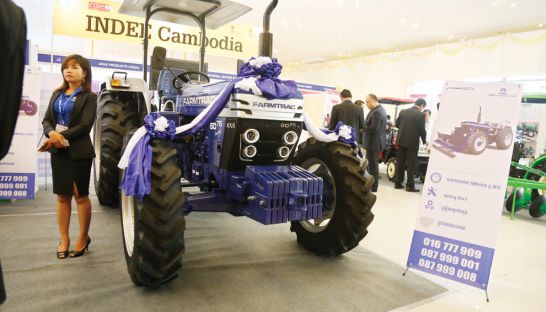Indian auto firms plan factories
Indian auto firms plan factories
Two major Indian auto manufacturers are increasing their presence in Cambodia by setting up manufacturing facilities to target the potential in the Kingdom’s automotive sectors, a representative from a visiting Indian business delegation said yesterday.

Speaking on the sidelines of engineering expo Indee Cambodia, Ravi Sehgal, vice chairman of the Engineering Export Promotion Council of India (EEPC), said Tata International and Bajaj Auto will open manufacturing plants in Cambodia, with the former focusing on light commercial vehicles and Bajaj sticking to two and three wheelers.
“We have discussed with the Cambodia Chamber of Commerce the possibility of setting up the Tata plant in Sihanoukville Special Economic Zone,” he said, referring to the 1100-hectare Chinese-owned industrial park on the outskirts of Sihanoukville.
He said Tata will look to import vehicles from India, but will supplement this with manufacturing operations possibly starting next year.
Parth Krishna, the business management officer for Bajaj Cambodia, confirmed the company’s foray into manufacturing in Cambodia, adding that it had started construction of a plant in Stung Meanchey and was awaiting final approval from the Council for Development of Cambodia before commencing operations.
“When we get full approval we can start importing all the machinery and run at 100 per cent [capacity],” Krishna said. “The project is for assembly and manufacturing of some certain parts. We don’t build the engine here, but we will produce seats and other small parts.”
Krishna said Bajaj had spent $2 million so far to build the plant. While the group had had sold around 300 to 400 three wheelers in Cambodia so far, Krishna said that number would go up as the price would fall once they start manufacturing here.
“The market for our three-wheel vehicles is different from tuk-tuks,” he said “But right now import taxes are very expensive, so the price of three-wheelers is expensive, around $2,500.”
Peter Brongers, president of the Cambodia Automotive Industry Federation, said the industry body had discussed the potential for cooperation with Tata.
“I think they can be very successful as price and quality is good,” he said. “Maybe they will start with complete knock-down kits first, but at the moment it is not financially feasible to set up a complete manufacturing plant from scratch.”
The Indian government, as part of its Act East policy, announced last year that it will encourage Indian businesses to set up manufacturing operations in the CLMV region – comprising Cambodia, Laos, Myanmar and Vietnam – in a bid to tap into China’s supply chain.
Indian Ambassador to Cambodia Naveen Srivastava said the push to set up in CLMV was backed by $100 million in funding by the Indian government, adding that Cambodia’s low labour cost, access to the regional market and the Kingdom’s Industrial Development Policy make it an attractive offering.
“I see products from all around the world here, but not from India and we would like for Cambodians to see that Indian products are good quality,” he said.
On the issue of increasing bilateral trade, Sehgal said India would use an incremental approach to bolster the trade of products with Cambodia.
“We will see more Indian products available here step by step. By 2017, there will be a lot more awareness [of Indian products],” he said.
Bilateral trade between the two countries was around $500 million in 2015 and could increase three or four times by 2020, he added.













